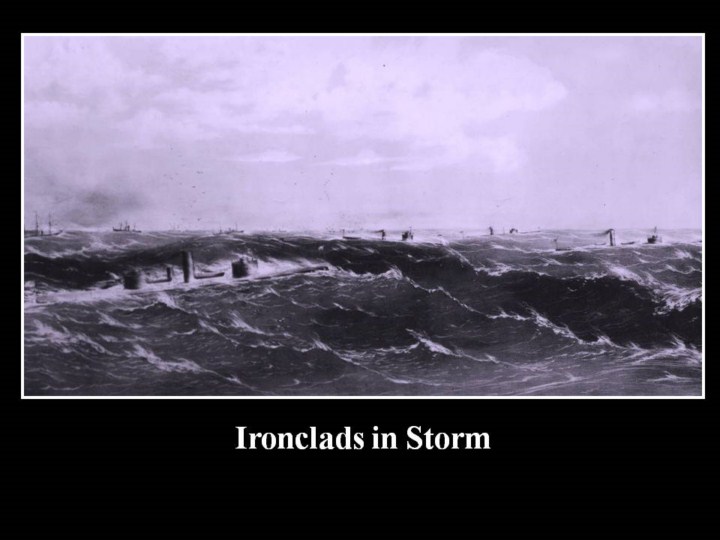| front |1 |2 |3 |4 |5 |6 |7 |8 |9 |10 |11 |12 |13 |14 |15 |16 |17 |18 |19 |20 |21 |22 |23 |24 |25 |26 |27 |28 |29 |30 |31 |32 |33 |34 |35 |36 |review |
 |
And other hazards had to be endured. With only inches of freeboard, many ironclads of both navies were literally only inches from disaster. One has only to contemplate the Monitor’s ill-starred voyage to Hampton Roads even before doing battle with the Virginia. Just one day out of New York, the Monitor encountered a storm which soon had heavy seas cascading over her deck, washing out turret caulking, flooding her berth deck, disabling her blowers, and nearly extinguishing her boiler fires. Her paymaster recalled what the ironclad’s fight for survival meant for her crew.
“Turning to go down from the turret I met one of our engineers coming up the steps, pale, black, wet, and staggering along gasping for breath. He asked me for brandy and I turned to go down and get him some and met the sailors dragging up the fireman and other engineers apparently lifeless. I got down as soon as possible and found the hold between decks filled with steam and gas and smoke; the sailors were rushing up stifled with gas. I found when I reached the berth deck that it came from the engine room, the door of which was open. As I went to shut it one of our sailors said he believed that one of the engineers was still in there--no time was to be lost, though by this time almost suffocated myself, I rushed in over heaps of coal and ashes and fortunately found the man lying insensible. One of the sailors who had followed me helped pull him out and close the door.”
|